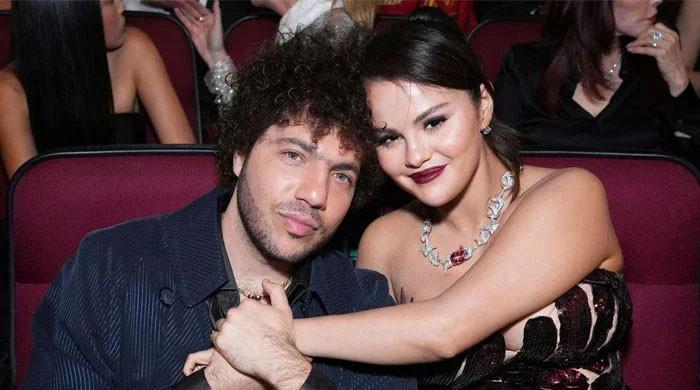17 “The Pitt” Behind-The-Scenes Facts That’ll Make You Watch The Show In A Totally Different Way

A library was set up on the set of The Pitt so the actors could read in between takes since cell phones were discouraged on set.
There are MASSIVE spoilers ahead for The Pitt Season 1!
1. First, Noah Wyle was inspired to star in a new medical drama 16 years after the conclusion of ER — which he starred in for 254 episodes from 1994 to 2009 — during the COVID-19 pandemic. He told Variety that he was getting messages from first responders that read, “Carter, where are you?” and “It’s really hard out here.” After an ER reboot failed to get off the ground, Wyle teamed up with ER producers John Wells and R. Scott Gemmill to create The Pitt.
NBC, Max
Wyle is also an executive producer on The Pitt and he wrote two episodes of Season 1.
Behind the scenes, the estate of Michael Crichton, who created ER, is suing Wyle, Wells, and Gemmill, claiming it’s an unauthorized ER reboot.
2. While auditioning for the show, actors were also given a “mission statement” written by Noah Wyle, which detailed the dedication he was expecting from the ensemble that would ultimately be cast. Isa Briones, who plays Dr. Santos, recalled the statement, saying something along the lines of, “This is a very specific type of show. It’s intense. It’s fast-paced. It’s like theater. We are a group of players. If you can be a team player who is ready to lock in with a family, then this is the place for you.”

Max
The mission statement connected to Wyle’s attempt to foster a family-like environment on set, which was one of his favorite things he got to experience on ER. He told Variety, “We see each other fall in love, get married, have children, get divorced. Those relationships transcend the screen and become palpable to an audience who wants to be part of that family. I’ve tried to create it in every job I’ve gone on but with varying degrees of success.”
3. Before production began, The Pitt cast was trained by real doctors for two weeks so they could learn how to perform emergency medical techniques that would look as realistic as possible on camera. A lot of physicians are also involved in the creation of each episode, which is why a lot of real-life doctors have praised how realistic the series is. Dr. Joe Saches, who was the technical advisor on ER, also works on The Pitt.
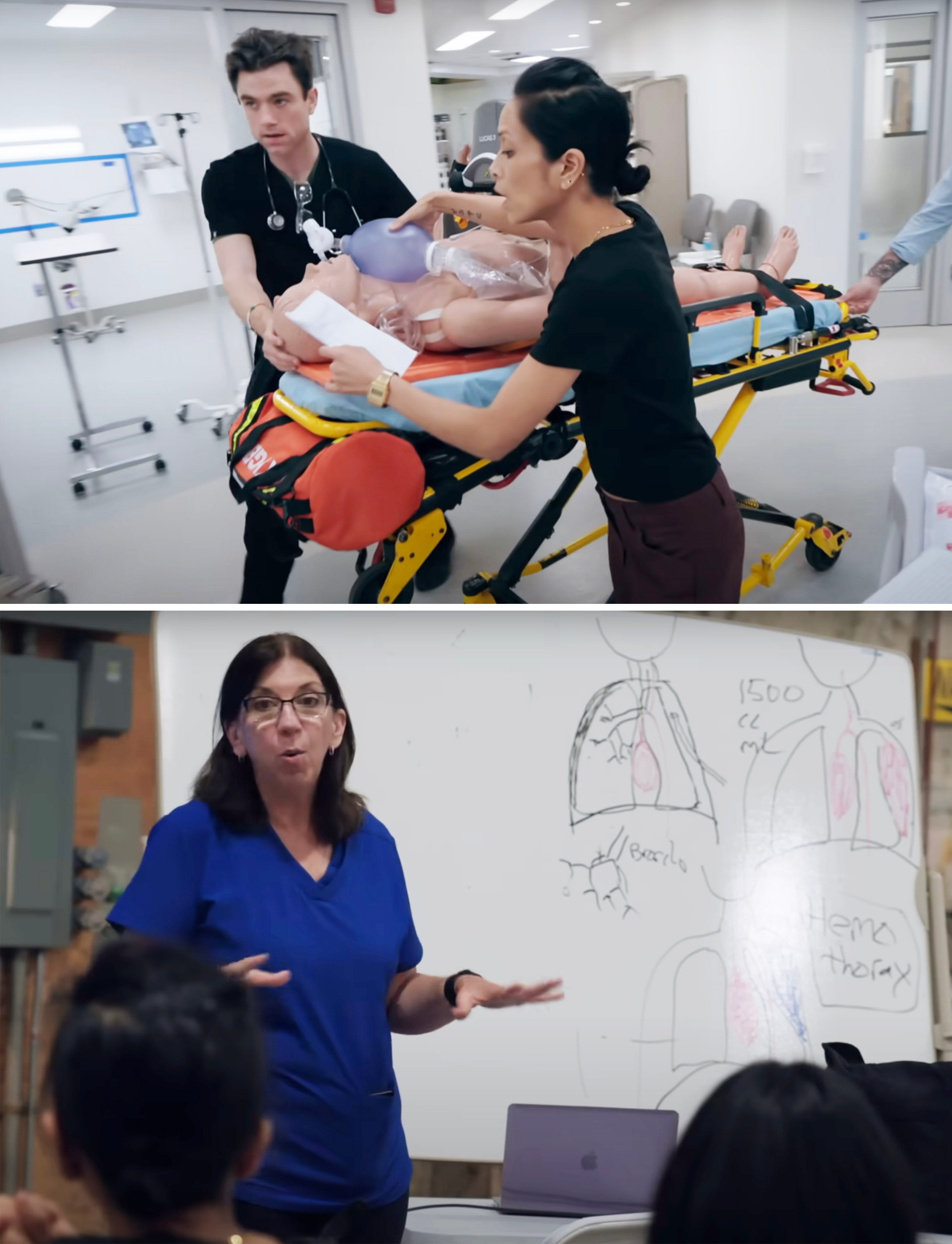
Max / Via youtube.com
By making the show as realistic as possible, executive producer John Wells told Variety, “What we’re trying to tell [viewers] is, ‘This is what we ask these people to do, and we need to be conscious of what their needs are because we’re ignoring a lot of the things that are going on. We need to provide them with the tools to do this job because we’re asking them to do something that’s very difficult.'”
4. During their medical boot camp, aka doctor school, the cast learned how to do tracheotomies, intubation, drawing blood, ultrasounds, and more from visiting medical professionals who helped train them. One thing the doctors were very particular about was the actors getting the CPR correct.
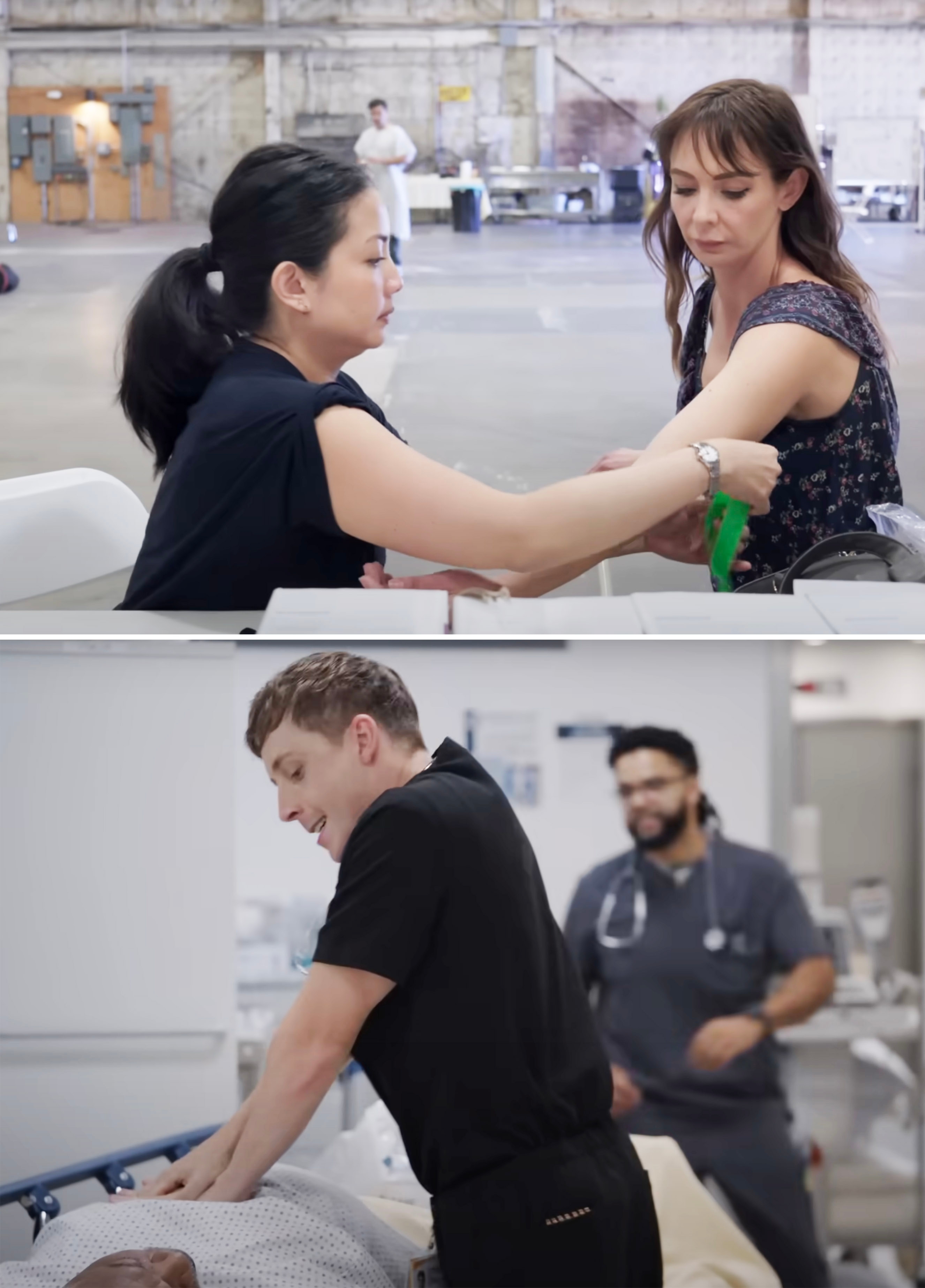
Max / Via youtube.com
While training, the actors performed everything on medical dummies and volunteers, so they were actually doing ultrasounds on real people.
5. Since we don’t see the characters’ lives outside of the hospital, the actors were given their backstories by the creators. Isa Briones told TVLine, “We would get pulled for individual meetings with John Wells and R. Scott Gemmill, and they wrote out a whole page of what they think your backstory is. They said, ‘Obviously, there’s room to play here. Share with us any ideas you have, but this is what we have in mind.'”
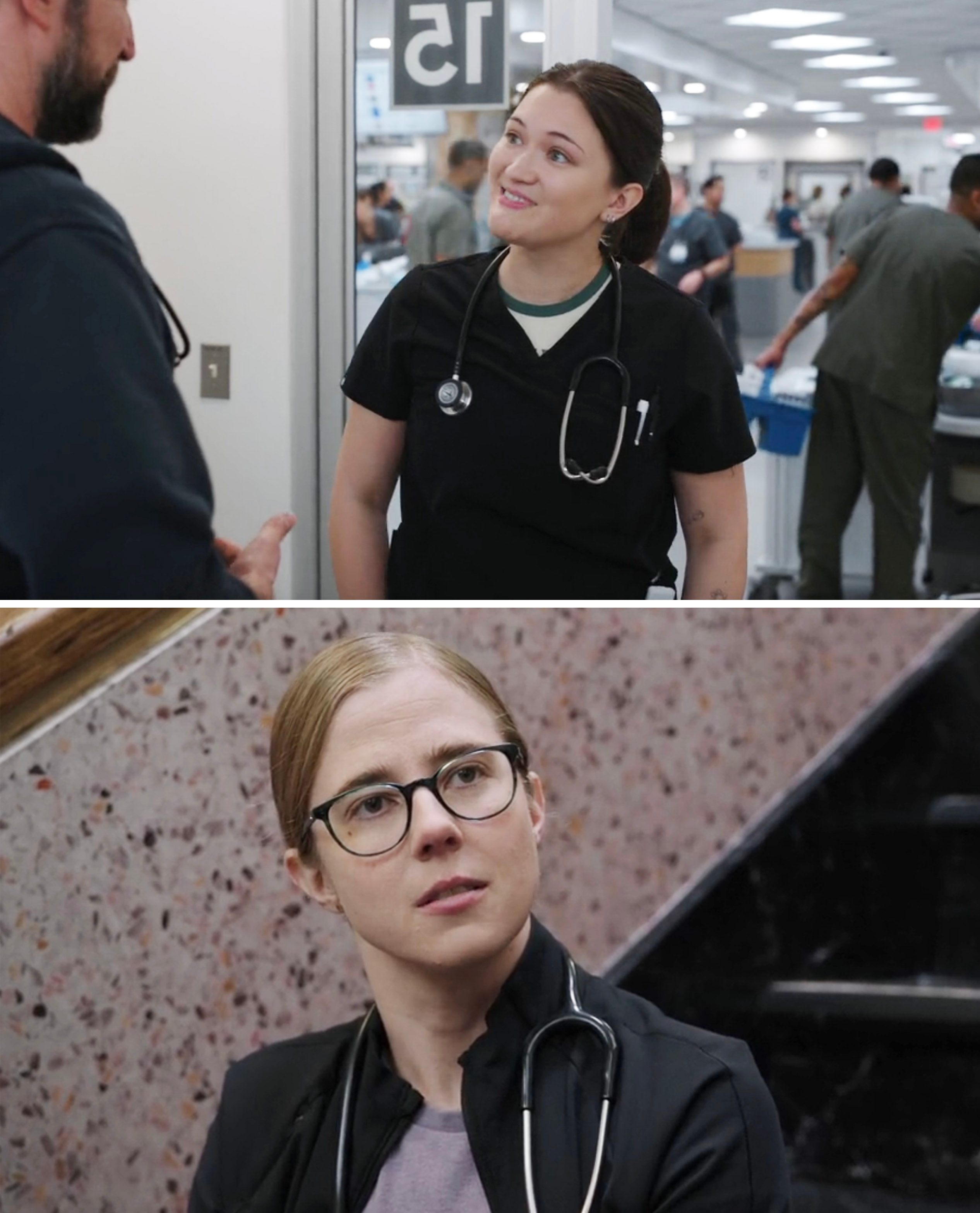
Max
Meanwhile, Taylor Dearden told Vulture that this was when she learned that Mel would have a sister named Becca, that she was the sole caretaker for her sister, and that both her parents were gone.
And Katherine LaNasa told Vulture that she learned that Dana’s mom had died when she was in high school and she was from a big family.
6. The Pitt is filmed almost like a play, with the cast staying on set throughout filming for the day, even if they are only in the background of a scene. The episodes are also shot in continuity and they filmed Episode 1 to Episode 15 in order. The actors were also given the scripts one at a time. Patrick Ball told Variety, “You might be the star of the show, but you’re going to spend three hours being a fuzzy blob in the background of somebody else’s scene.”
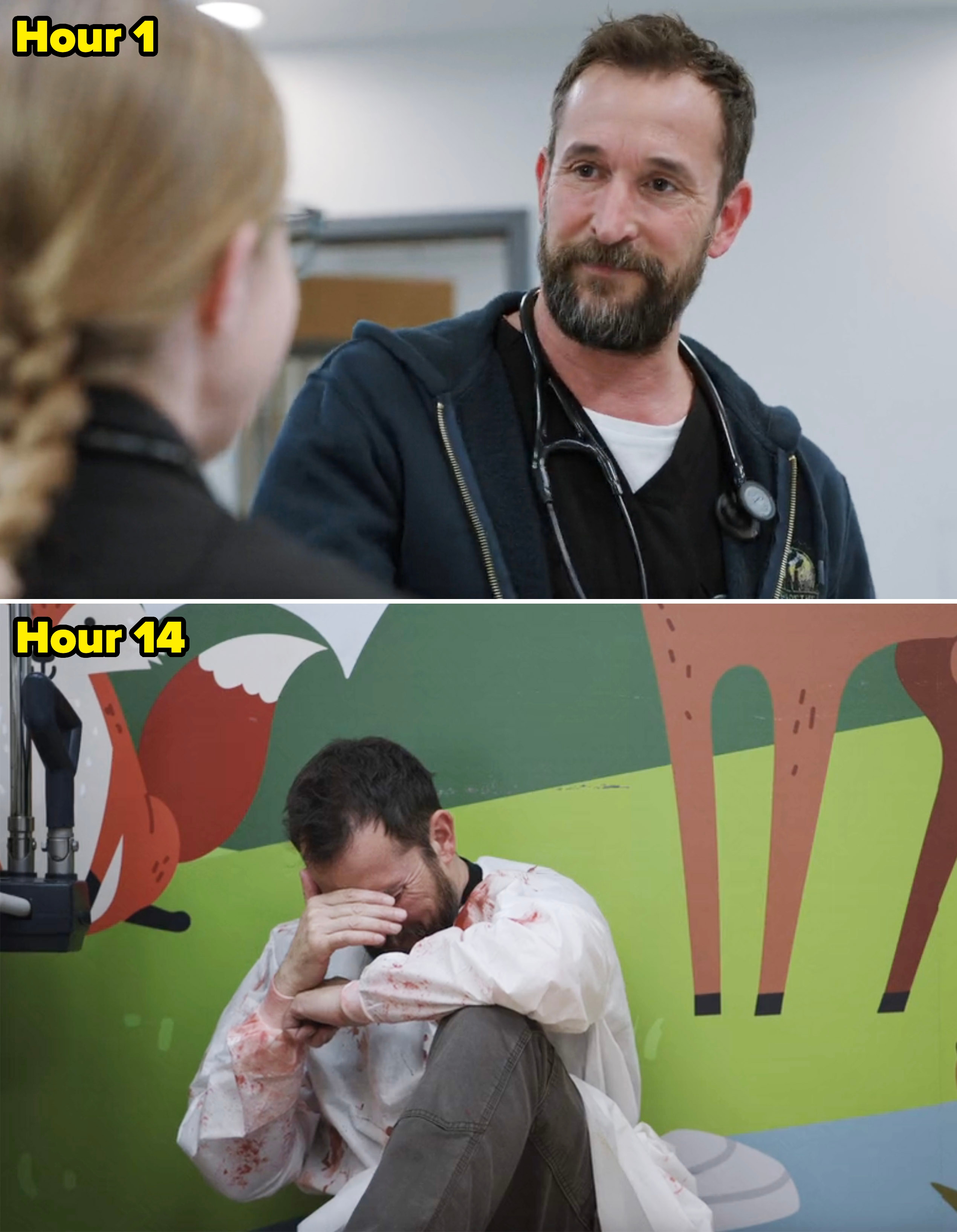
Max
The cast consistently being around and in the background of each other’s scenes also adds to the realism of being in an ER that The Pitt is trying to bring to TV.
7. Also, because of how the series is filmed, background actors are also on set all the time in the same hair, makeup, and costumes for the duration of filming the season. Executive producer John Wells told Variety, “People come in, and they’re in the emergency room waiting room for seven, eight episodes, with a line or not a line at all. And then we see them come back and they might have two or three lines. And then an episode later, they have a huge scene. So we had to have buy-in from everyone.”
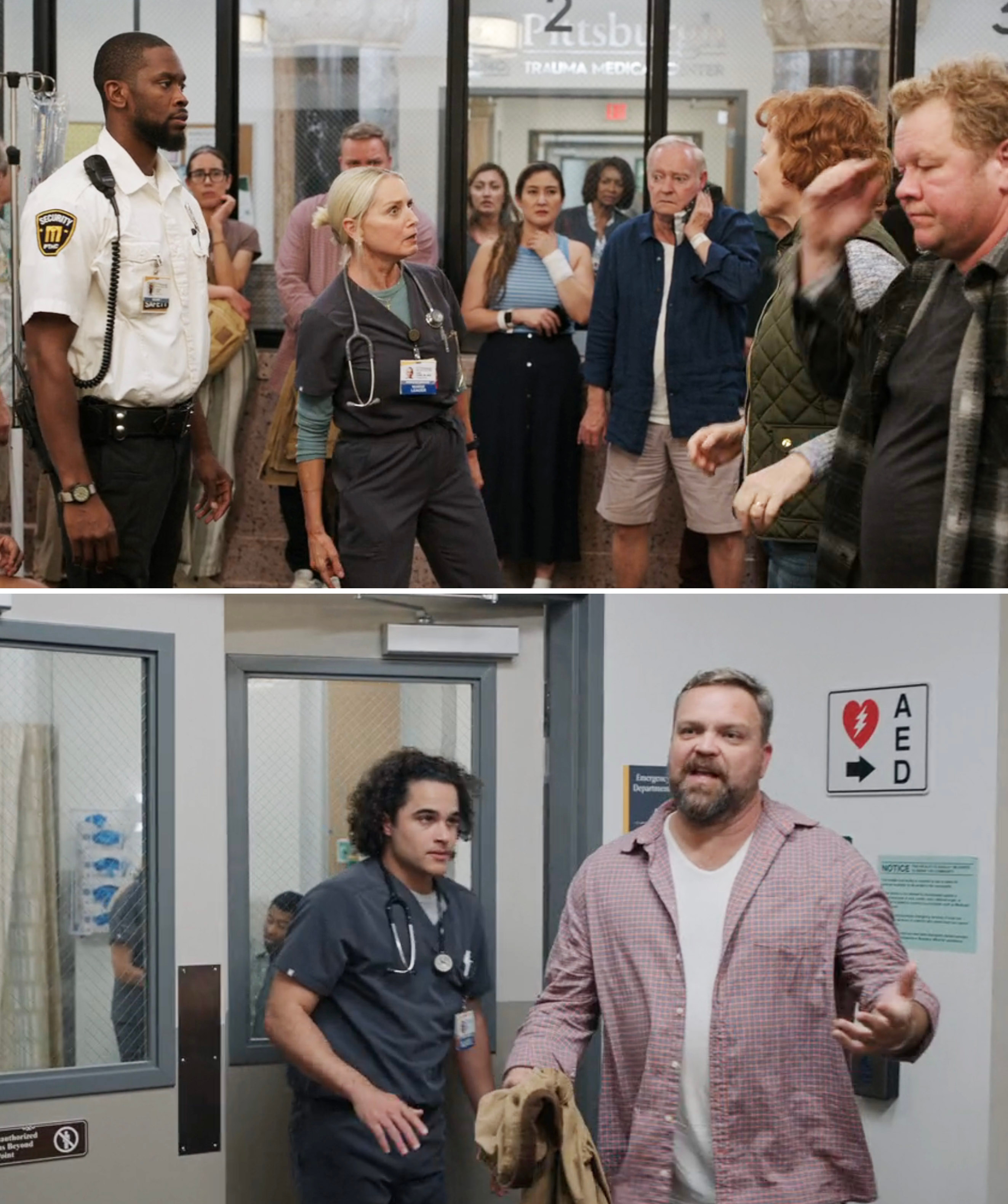
Max
He continued, saying, “We’ve got background artists who’ve been in the same bed for seven months reading books, and in the same makeup hair for seven months. The buy-in to it is what’s been so important.”
8. One way The Pitt makes the ER setting seem as authentic as possible is you’ll notice there is virtually no music. Unlike other medical dramas, like Grey’s Anatomy, the series doesn’t use popular songs to score scenes. Instead, there are a few instrumental moments here and there, but not many.
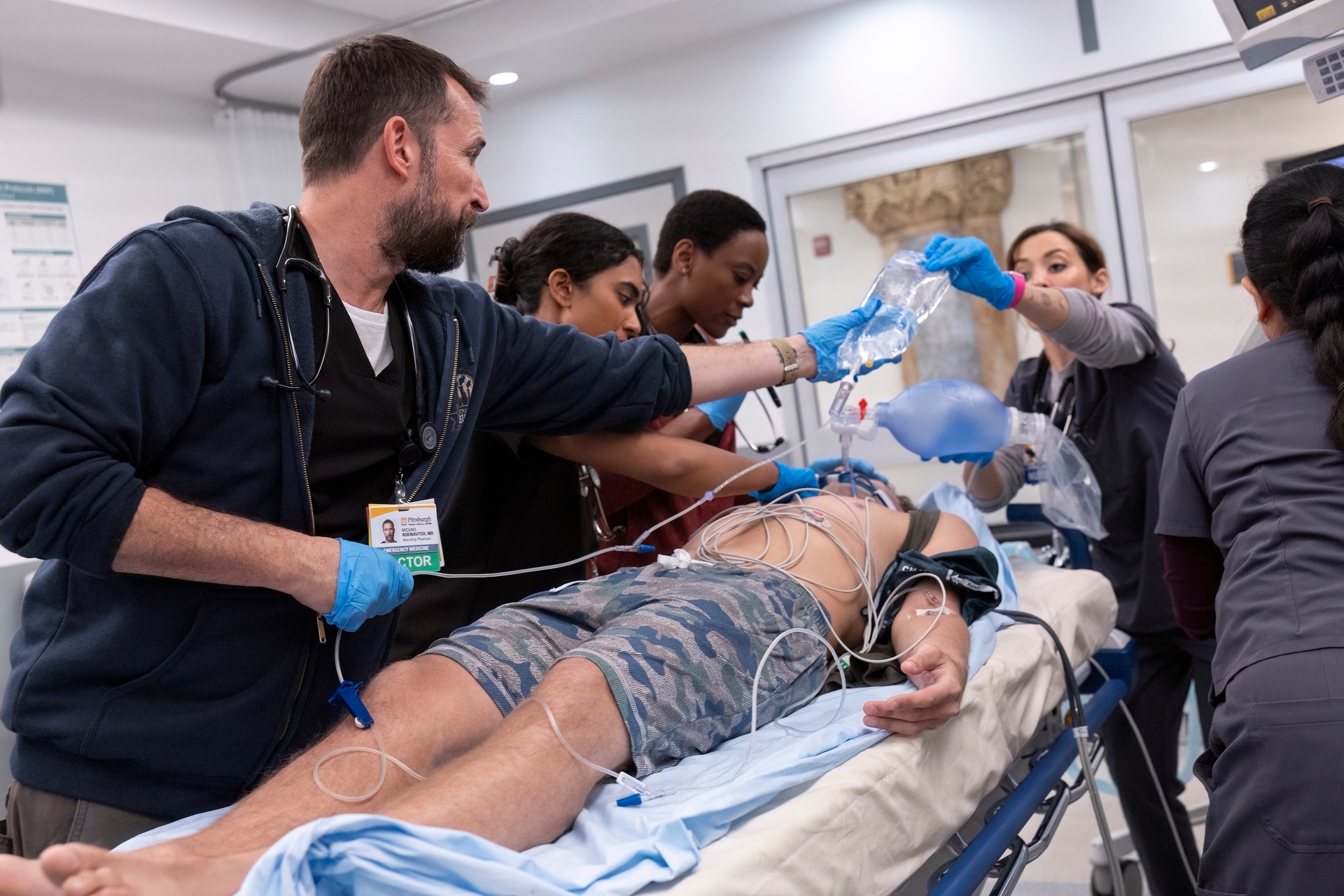
Warrick Page / Max
Executive producer John Wells told Variety, “So there’s an attempt to avoid the comfortable in the show. There’s no music telling you how to feel. There is no telling you exactly what every procedure is. We are just going to show you what the procedures are.”
9. In order to foster a family-like environment on set with all the actors, cell phones were banned from the set. Instead, Noah Wyle encouraged reading and chatting, which was likely an environment that existed during his pre-cell phone ER days. The cast even started a little library near craft services so people could grab books to read, with Noah donating a bunch of books. The books ranged from classics to modern releases, with one extra even keeping Harry Potter inside her fake pregnancy belly to read between takes.
Noah Wyle / Instagram / Via instagram.com
When asked about donating books to the library, Wyle didn’t directly take credit, telling Variety, “I remember thinking if I was going to bring books in, I was concerned about anything that could introduce conflict or acrimony into a harmonious set. So I went with books that I thought would be enjoyed by the most amount of people. If I did it, but because that would be foolish for me to do, I didn’t do it.”
10. The sets for The Pitt were designed before writing began on the series so that it would feel like a real ER, with people waiting in a waiting room, patients waiting to be seen again by doctors, and the monotony that can happen in an ER. The real-time aspect of each episode being an hour of a shift also allowed the show to track all the background characters and share their journeys. Executive producer and creator R. Scott Gemmill told Variety, “I’ve spent many times in the ER with loved ones, and it’s hard to capture what that feels like.”
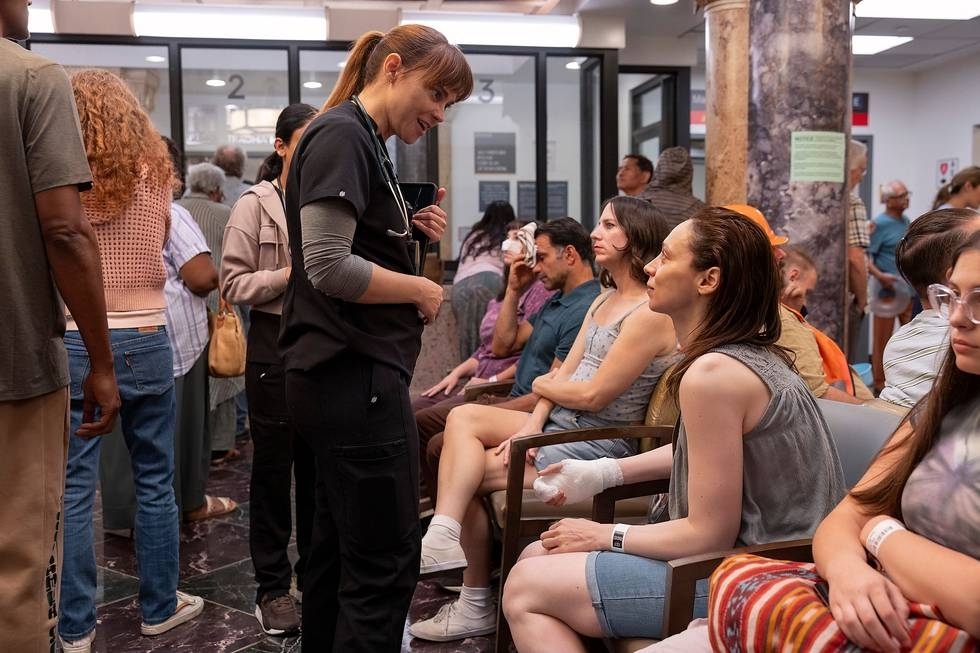
Warrick Page / Max
He continued, saying, “You never really get to know your doctors. They just work there. You’re there and then you’re gone. You’ll never see those people again. So trying to capture that was really important.”
11. For the PittFest mass shooting episodes, all of the blood on the floors had to be tracked by production designer Nina Ruscio, who needed to keep tabs on how the blood got from “space to space.” She had to figure out how to “manage the blood,” which was essential to depicting the reality of what happens in an ER during a situation like this. She told Variety, “A rule for myself was how blood is tracked from space to space: on the gurneys or off the gurneys onto the floor. It had to be ergonomically connected to where the wound was.”
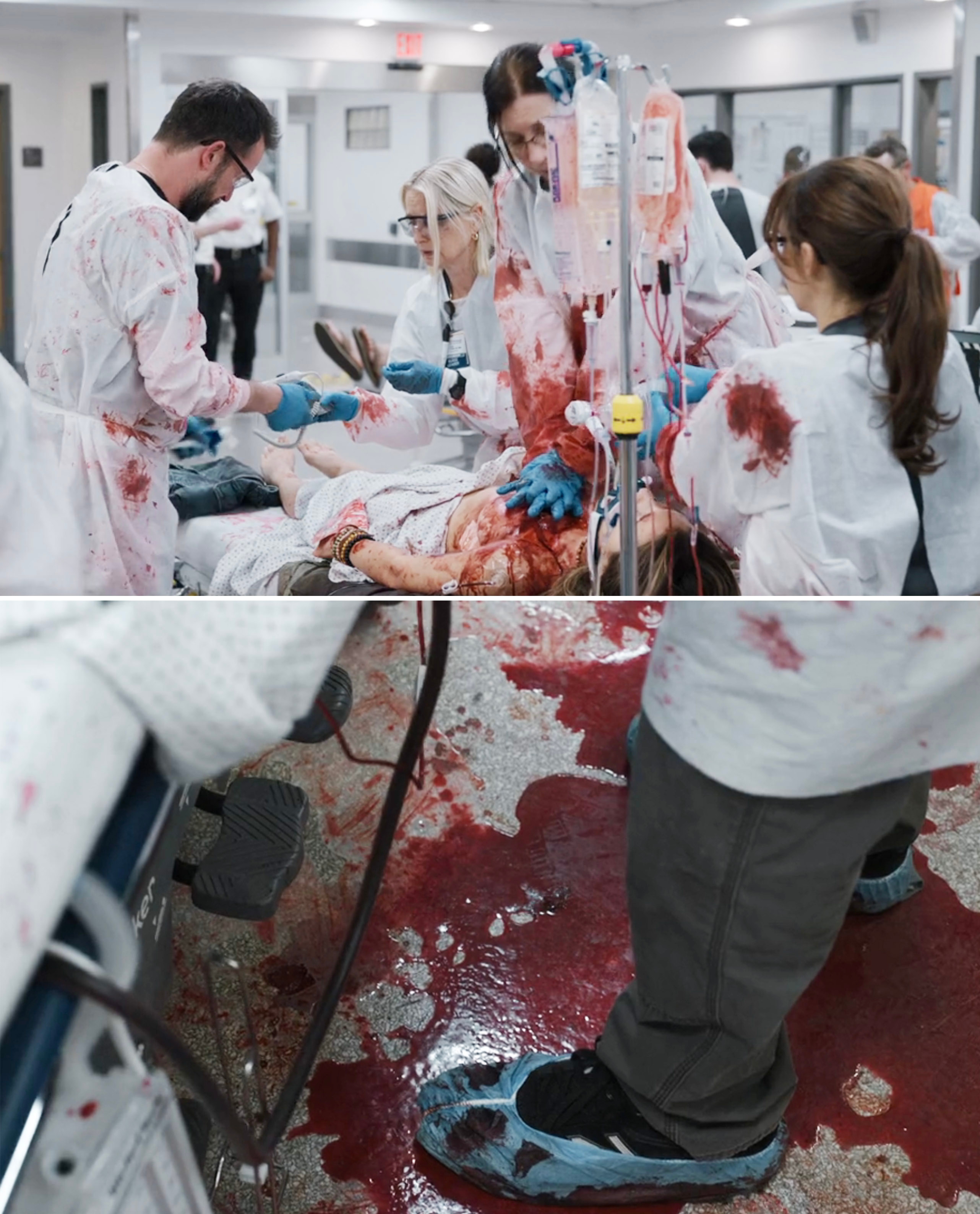
Max
She continued, saying, “The only thing I could do was to make sure that it was realistically placed and motivated specifically by wounds or specific patients. There was a lot more blood in the red zone because people have extreme wounds, while there was going to be less in the pink zone.”
12. One of Patrick Ball’s audition scenes for The Pitt was the moment when Robby confronts Langdon about the pills. So, while some viewers might’ve been caught off guard by Langdon’s secret, Ball knew from the very beginning. This is Ball’s first major TV role after having only guest-starred on Law & Order. In real life, his dad is a paramedic, and his mom is an ER nurse.
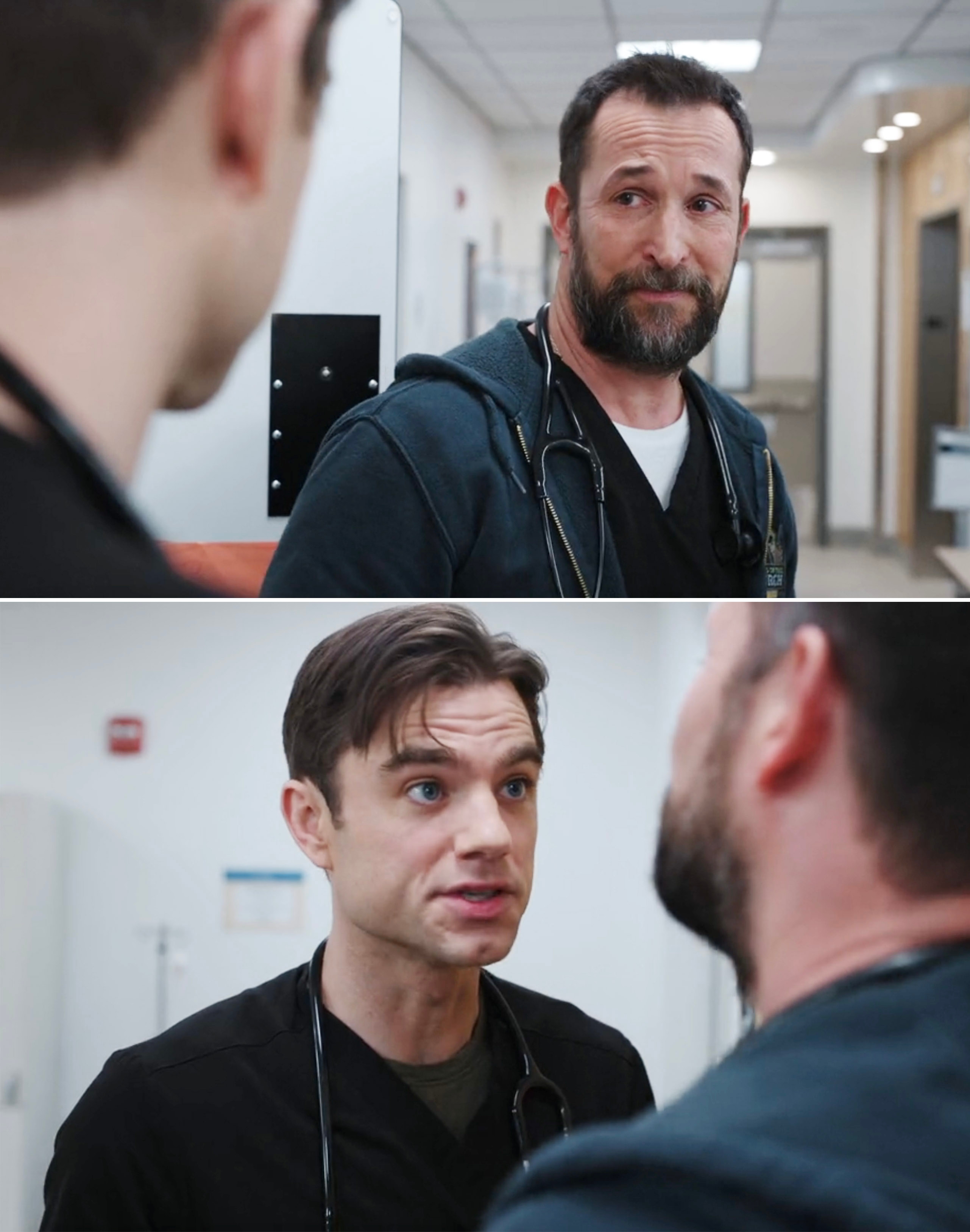
Max
Speaking more about his audition with Vulture, Ball recalled, “John Wells goes, ‘Okay, take whatever time you need.’ I was like, ‘John Wells, I was born for this. Let’s rock, baby.'” Ball added that he grew up watching ER with his parents.
He also said that this moment between Robby and Langdon “is the closest thing you’re going to get to a break-up scene in The Pitt.”
13. In order to make the birth scene in Episode 11, aka “5:00 p.m.,” as realistic as possible, a “birth rig” was used to make it look like Enuka Okuma, who played Natalie, was actually giving birth. The rig consists of a gurney with a prosthetic of a pregnant belly, legs, and a vaginal canal anchored on top. Okuma was able to sit in a kneeling chair behind it and align her body with the rig. Then, her real legs and two puppeteers — who were controlling the silicone baby and tubing that added blood and other fluids — were hidden by the gurney and medical drapings.
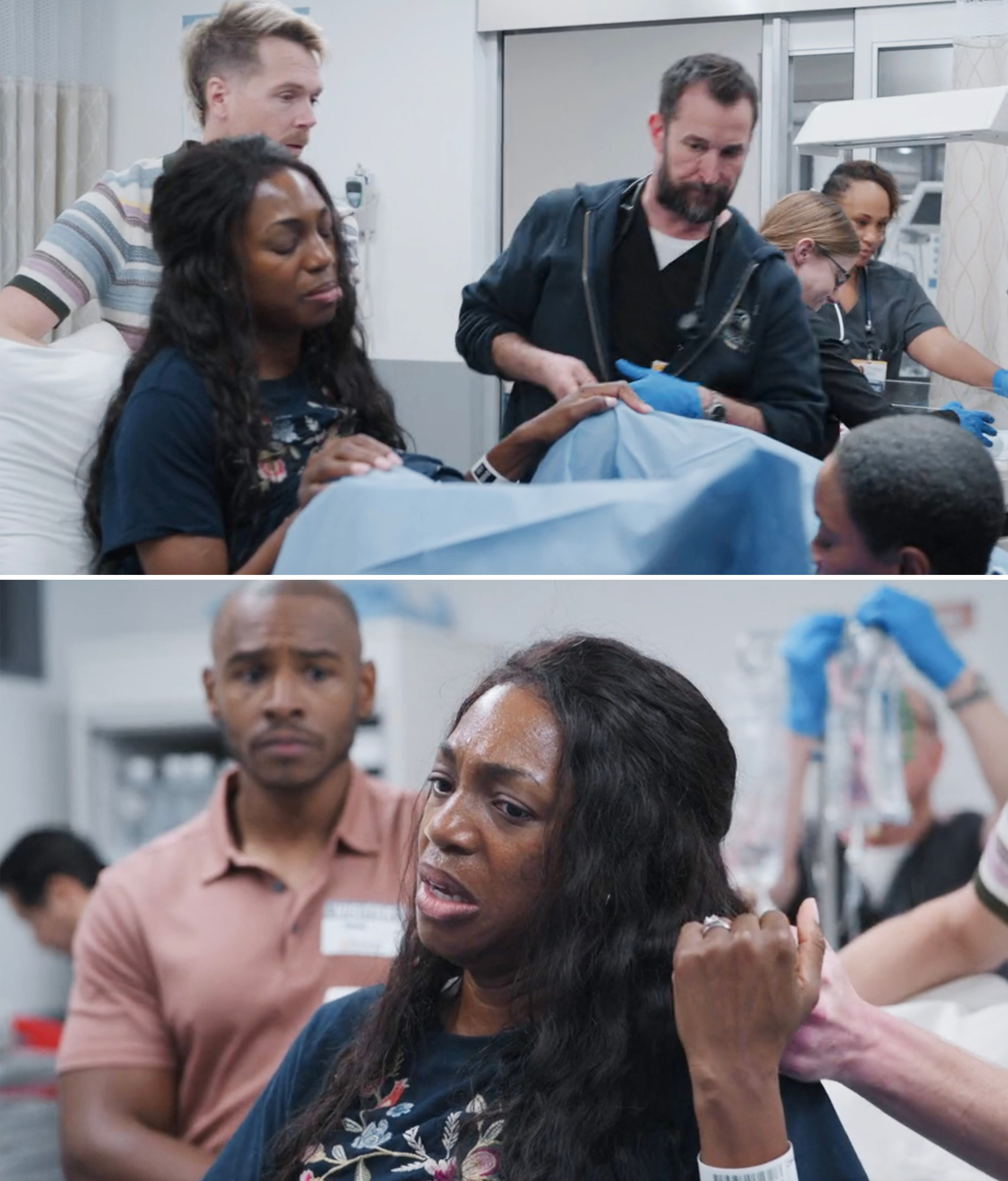
Max
Director Quyen Tran and Okuma also worked with an intimacy coordinator, who was on set during filming. Okuma told Vulture, “Everyone understood it wasn’t me, but it’s still a vulnerable position to be there, with people kind of gawking. I really, truly appreciated it.”
14. Also, the moment when Mel holds the newborn baby in Episode 11 wasn’t scripted but something the cast came up with while filming the episode. The baby was animatronic, but Dearden said you could feel it moving with a puppeteer controlling it off-camera. Taylor Dearden told Vulture, “Dr. Collins was the only one supposed to be handling the baby, but I remember Tracy Ifeachor saying, having lost a baby, it would be really hard to cradle a healthy baby right now.”
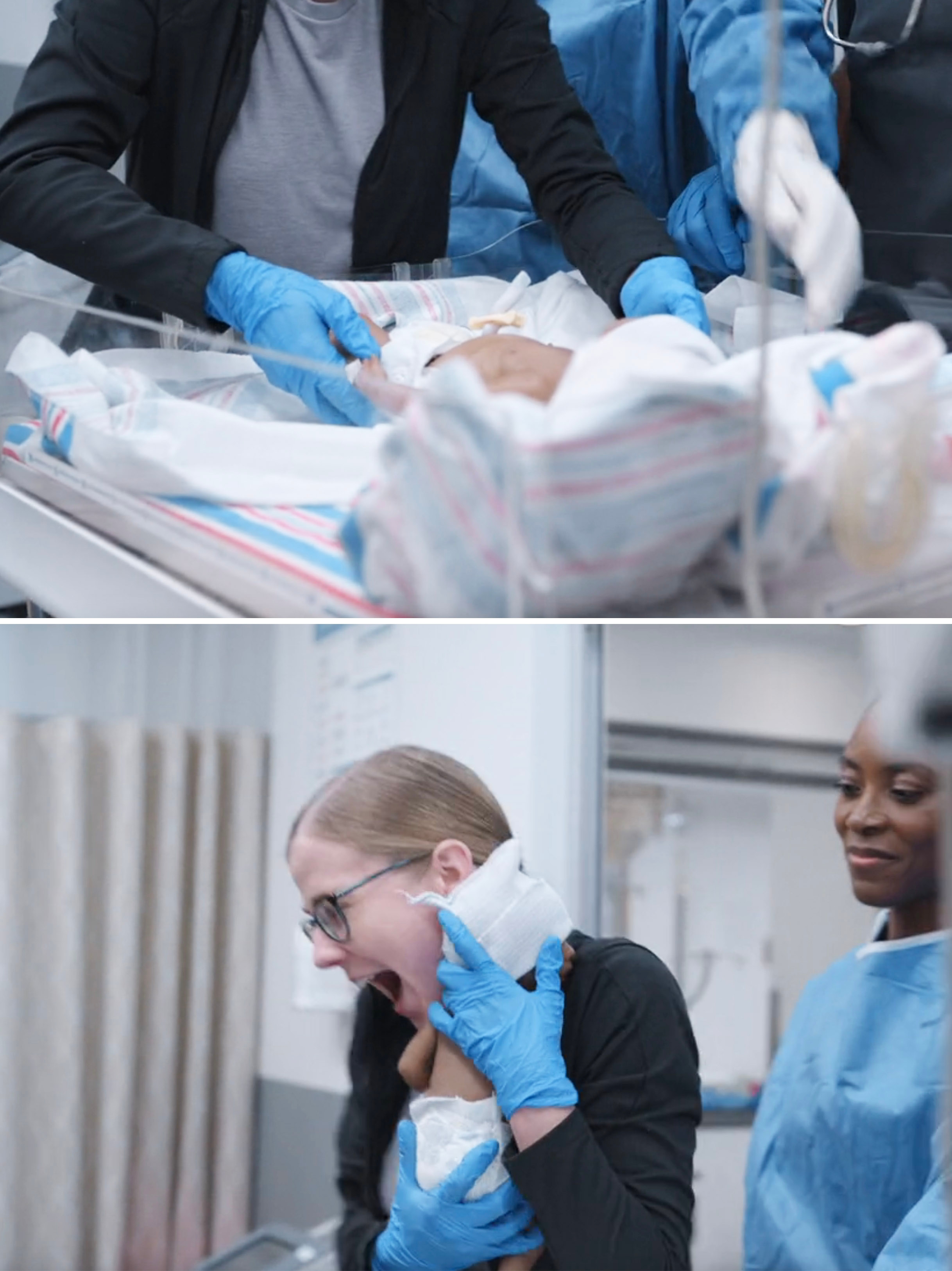
Max
Dearden added, “It was a robot baby. You can feel the mechanisms move. Even though it looks really smooth, if you’re holding it, it’s a very jerky feeling. My hand placement was where it was because of an external battery I had to hide. It’s like, ‘Wow, she has a firm grip on the baby’s ass.’ Yep, because that’s the battery!”
15. Katherine LaNasa shadowed a nurse named Kathy Garvin, who works at LA General and who the character of Dana Evans is loosely based on. She said while shadowing Garvin, she learned about the “care of [the ER] regulars.” LaNasa told Vulture, “She told me about a guy there and what his journey had been like. I really got to see her relationship to him. But it was very matter-of-fact because there’s emotional, mental, and physical trauma going through there all day, every day. For them to be able to serve everyone, they have to have this kind of emotional efficiency.”
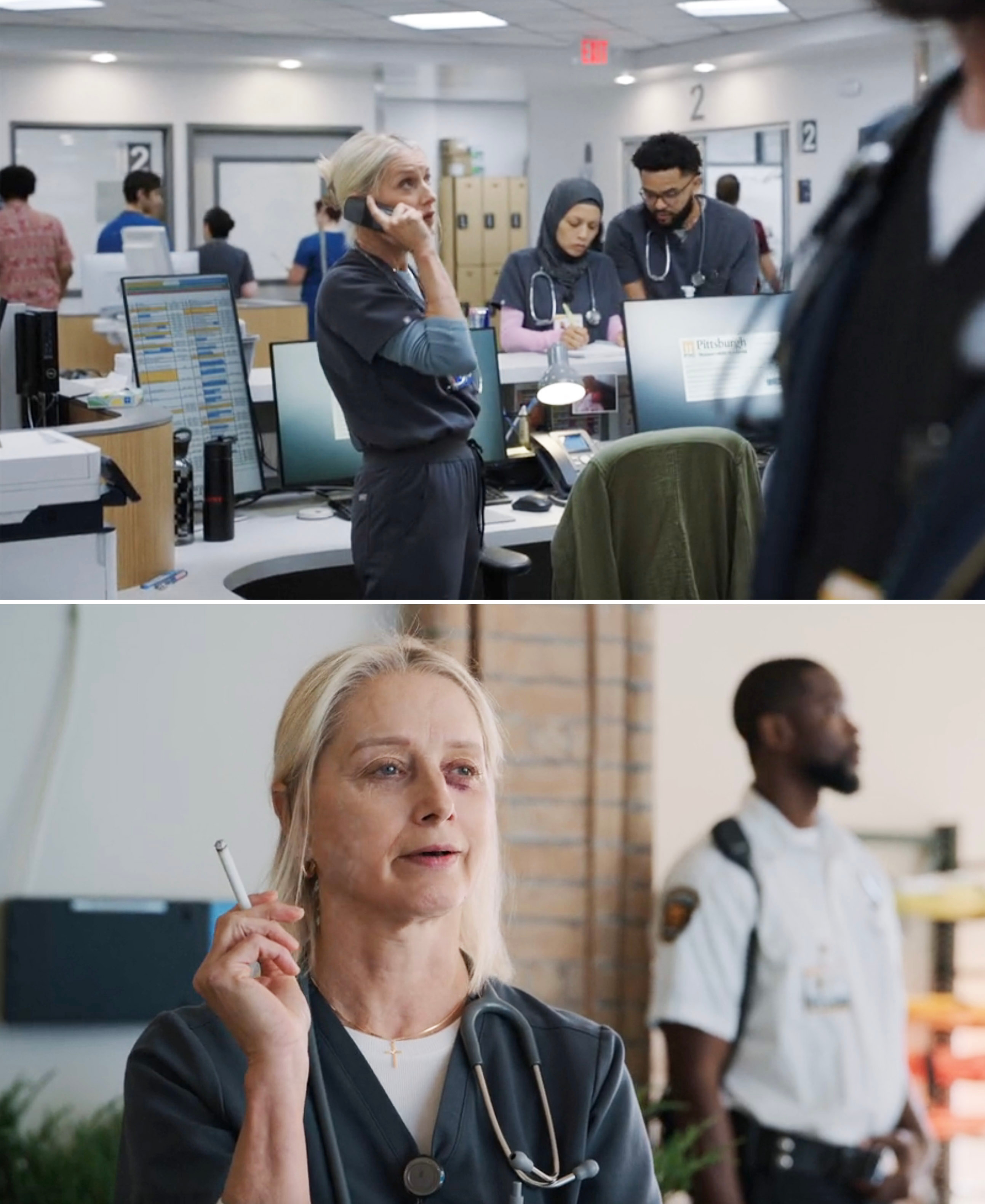
Max
LaNasa also said she asked Garvin how she would handle a rude patient — like Dana with Doug Driscoll in Season 1 — and asked if she ever “subtly put them to the back of the line,” Garvin told her, “No, but I wouldn’t give them a sandwich.”
16. In Episode 14, aka “8:00 p.m.,” McKay’s father is played by actor Fiona Dourif’s real-life dad, Brad Dourif, who has been playing Chucky since Child’s Play in 1988. Speaking to Variety about how her dad wound up in The Pitt, Dourif said, “My suspicion is that it was Noah Wyle’s idea. He has talked to me about my dad’s career in great detail before, so I know there needed to be a device to get Harrison home, and it was probably thrown out in the writers’ room as a very cool idea.”
Fiona Dourif / Instagram / Via instagram.com
She continued, saying, “I was approached by [executive producer and writer] Simran Baidwan, and she very respectfully wanted to get my permission before they put an offer out to my dad — and I was delighted. We were both delighted. It was a gift, really, and a very tender moment to shoot.”
17. And finally, since the big trauma scenes are incredibly complex, the actors rehearse everything before filming begins. “The lines come rapid fire. The procedure comes rapid fire. There’s so many moving pieces,” Fiona Dourif told HBO. Gerran Howell, who plays Whitaker, also related the big trauma scenes to a “dance” where it’s almost like “everyone has their own choreography.”
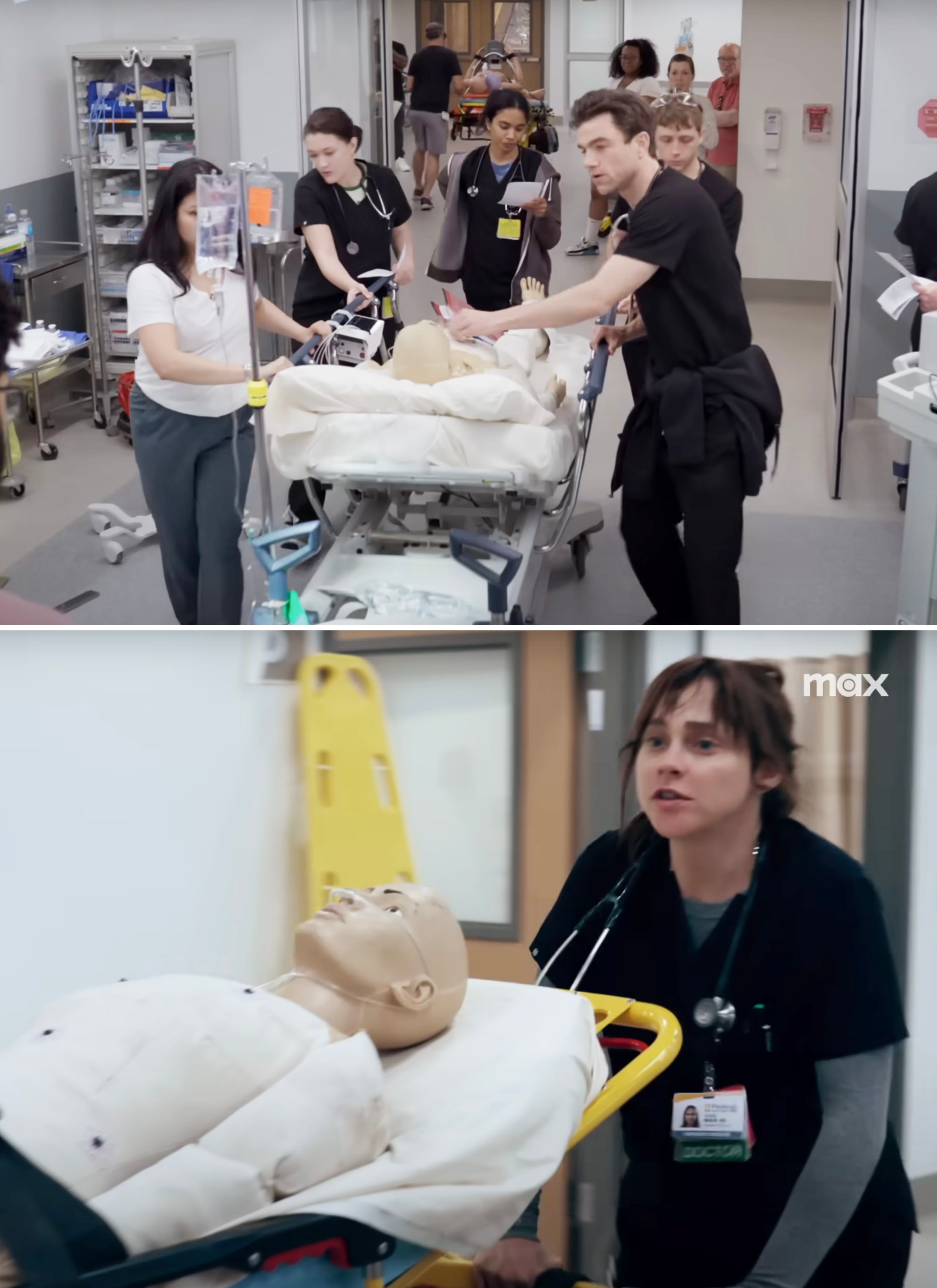
Max / Via youtube.com
Although they rehearse, they also want the trauma scenes to feel as authentic as possible, so they aren’t afraid to bump into each other and more because that’s pretty normal in a real ER.




